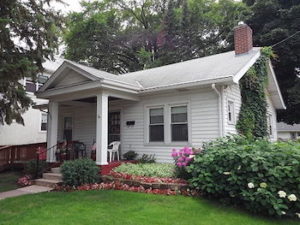
*On this date in 2014, the Arthur and Edith Lee House, a historic home located in the Field neighborhood of Minneapolis, Minnesota, was listed on the National Register of Historic Places.
In June 1931, the home was purchased by Arthur and Edith Lee, a Black couple. At the time, the surrounding area was considered a "white neighborhood." Several years prior, in 1927, hundreds of property owners in the area had signed a contract with the neighborhood association pledging not to sell or rent their property to non-whites. When the Lees moved in July 1931, they were approached by the neighborhood association and offered more than they paid to sell the home back. After the Lees declined, neighbors began to harass them by shouting threats and insults, posting offensive signs in their yard, and throwing garbage and excrement on their lawns.
Like Redlining, the unrest escalated over the next several days as crowds grew into the hundreds, and later, thousands continued their campaign of harassment by shouting slurs and throwing rocks at the home. Local police offered little additional support to the Lees. On July 16, the Minneapolis Tribune broke a media blackout with a front-page story entitled "Home Stoned in Race Row." Arthur Lee, a World War I veteran, was quoted in the article as saying, "Nobody asked me to move out when I was in France fighting in mud and water for this country. I came out here to make this house my home. I have a right to establish a home."
The publicity from the article generated even larger crowds and onlookers. All available police in the city were called to form a cordon around the house and ensure the mob did not block nearby streets. The family members of the local NAACP chapter reached out to them for assistance. Lena O. Smith, the chapter's president, offered legal assistance and argued that the Lees should make a statement that they would not be intimidated. The Lees accepted Smith's counsel, and she drafted a statement published in all of the local newspapers noting that "Mr. Lee has no intention of moving now or later, even after we are assured the feeling in the district has subsided."
Smith's assertive public statement and strong police presence quelled the rioting. The police presence remained at the Lees' house for more than a year after that; the Lees' daughter was escorted to and from school by police. In 1934, the Lees moved from their homes to the historically Black Central neighborhood. Interest in the home's history was renewed in 2001 when a law professor published an article on the Lees' second attorney, Lena O. Smith, including her role in the event. The house listed on the National Register of Historic Places is #14000391. It is there based on its significance to the social history of African Americans and housing discrimination in Minneapolis.